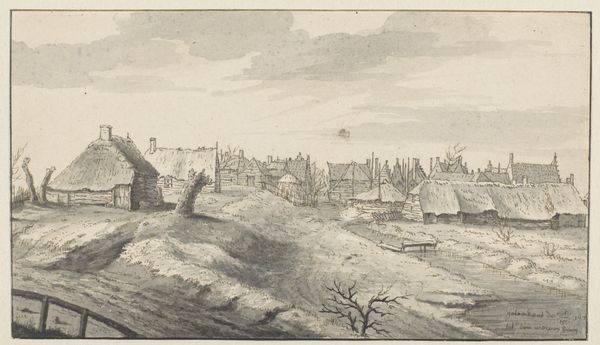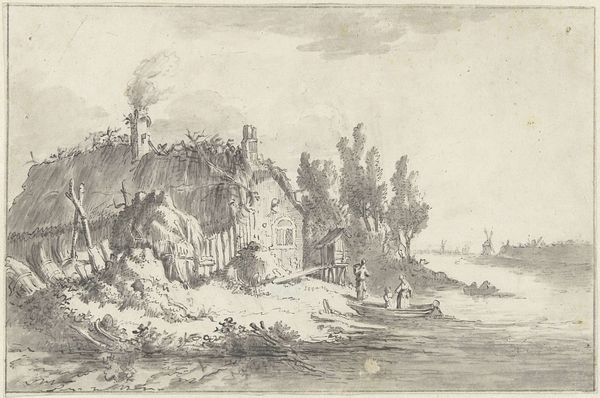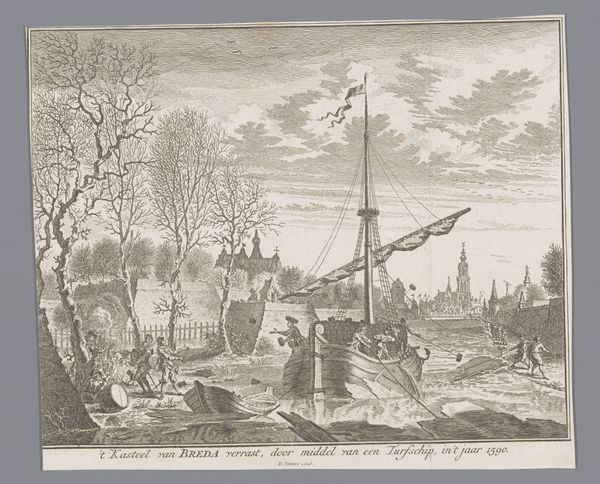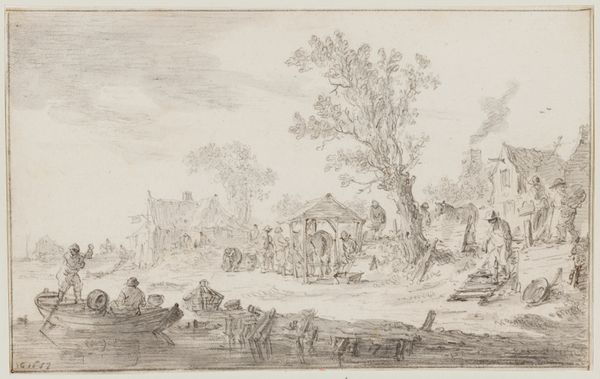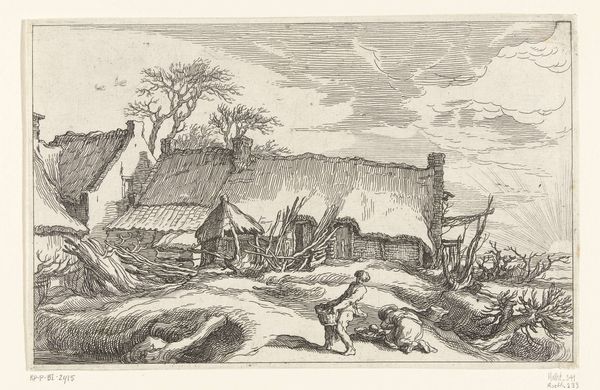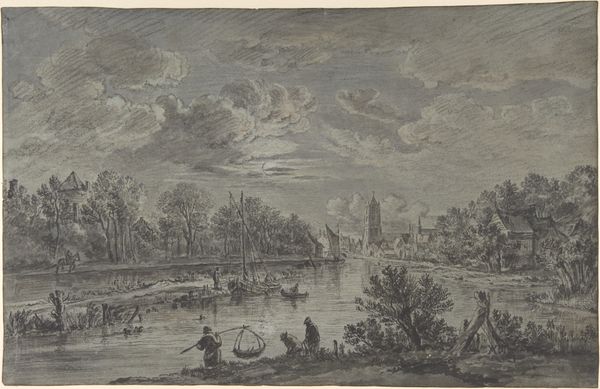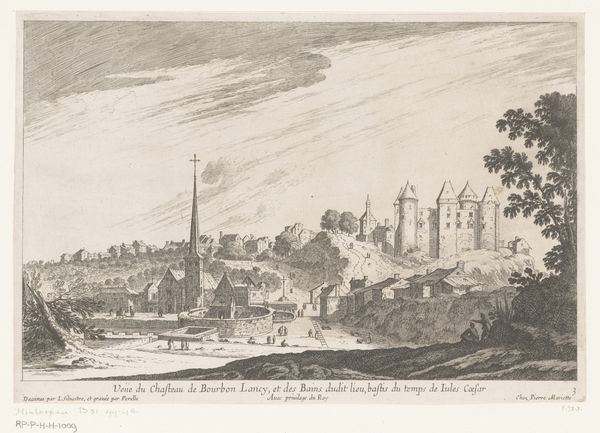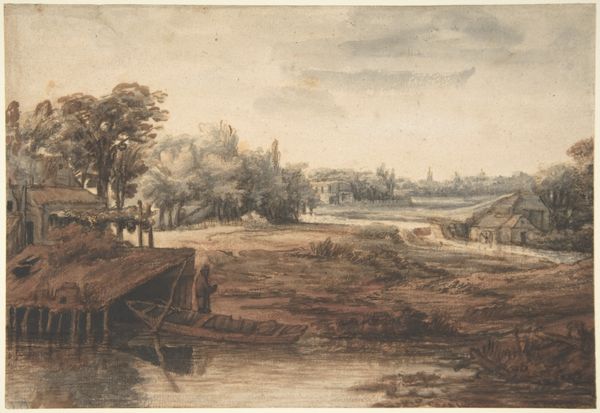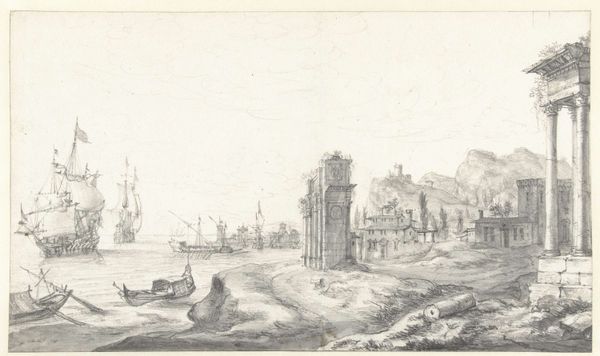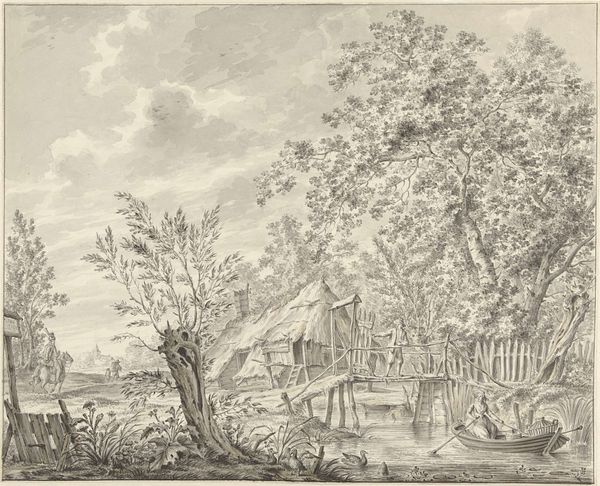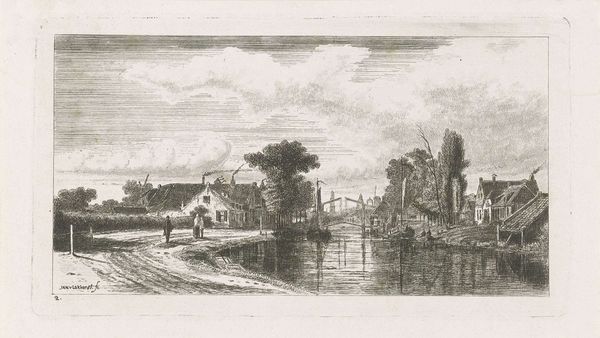
Ruïnes op de noordzijde van het Steenschuur na de Buskruitramp te Leiden, 12 januari 1807 1807
0:00
0:00
drawing, paper, ink
#
drawing
#
landscape
#
paper
#
ink
#
romanticism
#
cityscape
#
history-painting
#
realism
Dimensions: height 415 mm, width 586 mm
Copyright: Rijks Museum: Open Domain
Curator: This is Pieter Gerardus van Os's drawing, "Ruïnes op de noordzijde van het Steenschuur na de Buskruitramp te Leiden, 12 januari 1807," made in ink on paper. The work is currently housed at the Rijksmuseum. Editor: It's stark, isn't it? The monochromatic palette really amplifies the sense of desolation. I'm immediately struck by the way the skeletal remains of the buildings reach toward the sky, mirroring the barren trees. Curator: Absolutely. Van Os created this piece following the devastating gunpowder explosion in Leiden. The blast's impact transcends mere physical destruction, becoming a metaphor for societal upheaval and fragility. We must consider how such events shaped collective identity and spurred political discourse at the time. Editor: And thinking about that upheaval in concrete terms, I find myself focused on the material cost: the shattered brick, splintered wood. The drawing emphasizes the labor needed for reconstruction—look at all the figures working to clear the debris, ferrying it away on boats. It highlights the human cost measured in labor, the sheer effort needed to rebuild. Curator: Indeed, but I think the artist directs us to observe how systems of power, even after unimaginable trauma, find ways to reassert themselves. The church spire, still standing amidst the devastation, functions as a poignant reminder of enduring institutions and the narratives they perpetuate. We can't ignore the way that dominant structures were able to withstand literal explosions, thus underlining enduring systems of dominance. Editor: I agree, and seeing the people digging and pulling things up—it calls to mind questions about resilience and adaptability in the face of disaster, and I also wonder: who owns these boats, who is directing their labor and to whose profit do they work? The materials—the tools, the boats, even the remnants of destroyed buildings— speak volumes about the modes of production in this post-disaster society. Curator: I concur; this artwork serves as a testament to our ability, or perhaps our compulsion, to rebuild. This piece remains pertinent because these power dynamics and traumatic cycles still shape us now. Editor: And I appreciate how viewing it makes us consider the work that lies ahead for us too. It's not enough to admire what’s in front of us.
Comments
No comments
Be the first to comment and join the conversation on the ultimate creative platform.

